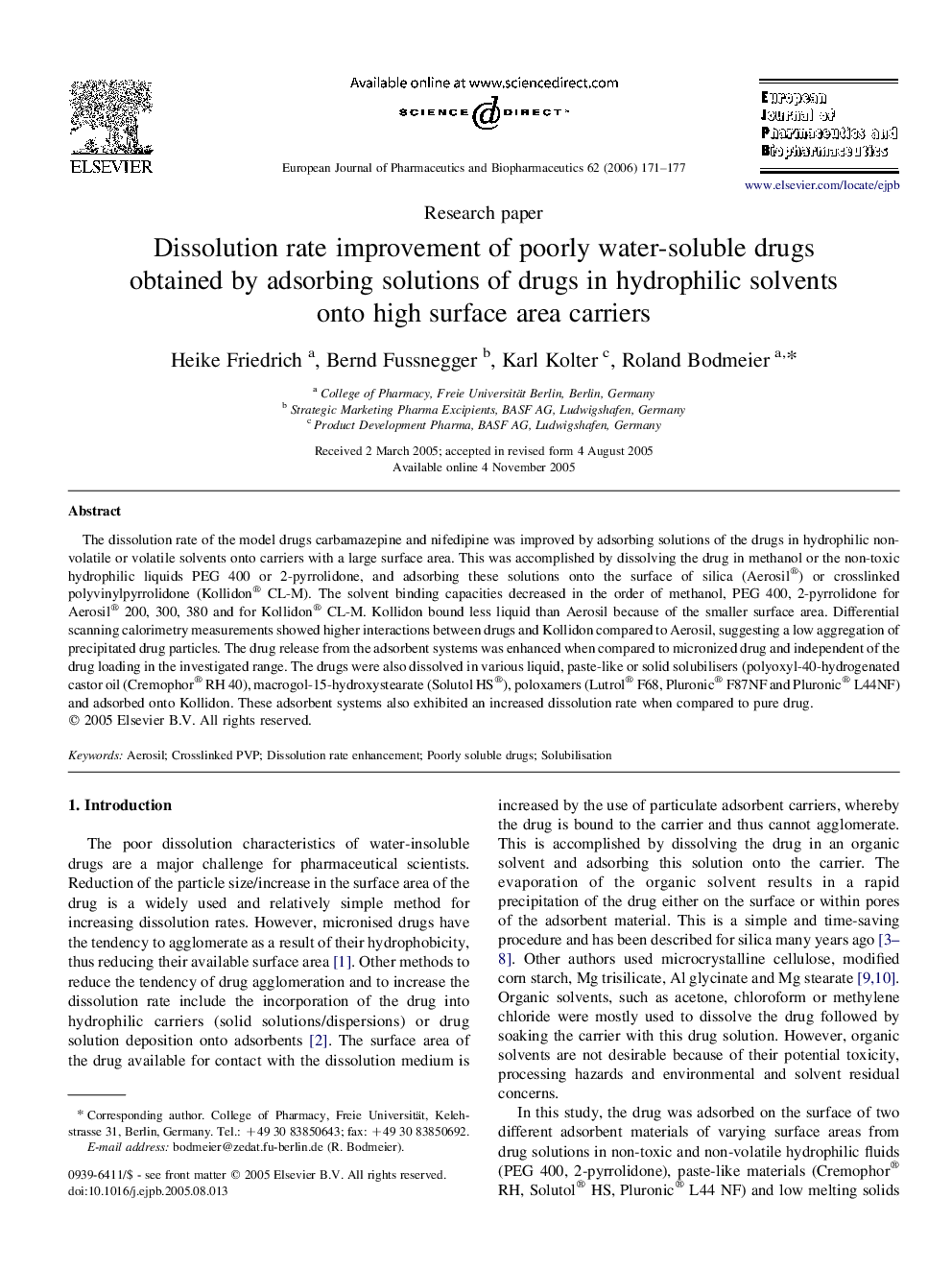| Article ID | Journal | Published Year | Pages | File Type |
|---|---|---|---|---|
| 2085269 | European Journal of Pharmaceutics and Biopharmaceutics | 2006 | 7 Pages |
The dissolution rate of the model drugs carbamazepine and nifedipine was improved by adsorbing solutions of the drugs in hydrophilic non-volatile or volatile solvents onto carriers with a large surface area. This was accomplished by dissolving the drug in methanol or the non-toxic hydrophilic liquids PEG 400 or 2-pyrrolidone, and adsorbing these solutions onto the surface of silica (Aerosil®) or crosslinked polyvinylpyrrolidone (Kollidon® CL-M). The solvent binding capacities decreased in the order of methanol, PEG 400, 2-pyrrolidone for Aerosil® 200, 300, 380 and for Kollidon® CL-M. Kollidon bound less liquid than Aerosil because of the smaller surface area. Differential scanning calorimetry measurements showed higher interactions between drugs and Kollidon compared to Aerosil, suggesting a low aggregation of precipitated drug particles. The drug release from the adsorbent systems was enhanced when compared to micronized drug and independent of the drug loading in the investigated range. The drugs were also dissolved in various liquid, paste-like or solid solubilisers (polyoxyl-40-hydrogenated castor oil (Cremophor® RH 40), macrogol-15-hydroxystearate (Solutol HS®), poloxamers (Lutrol® F68, Pluronic® F87NF and Pluronic® L44NF) and adsorbed onto Kollidon. These adsorbent systems also exhibited an increased dissolution rate when compared to pure drug.
